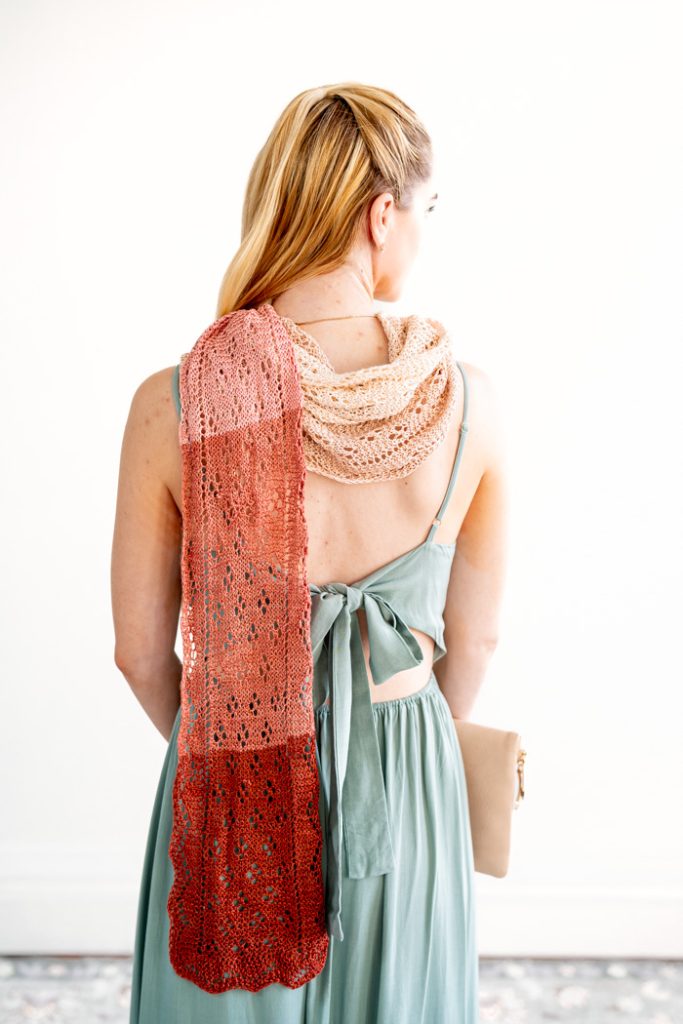
Silk has long been associated with luxury, elegance, and comfort. Its natural sheen, lightweight feel, and temperature-regulating properties make it a dream fiber for knitters, especially when creating garments for spring. Whether blended with other fibers or used in its purest form, silk brings unique qualities to every skein. In this article, we’ll explore the differences in silk content, offer tips for knitting with silk, and discuss why silk fiber is an excellent choice for spring wearables.
Understanding Silk Content: Mulberry, Tussah, and Silk Blends
Not all silk is created equal. While all silk comes from silkworms, the type of silk depends on the species of silkworm and how the fibers are harvested. Here’s a breakdown of the most common silk types found in knitting yarns:
Mulberry Silk
Mulberry Silk is considered the highest quality silk. It comes from silkworms that are fed exclusively on mulberry leaves, resulting in incredibly smooth, strong, and lustrous fibers. This silk is known for its brilliant sheen and soft drape, making it a favorite for luxury knitting projects.
Tussah Silk
Tussah Silk, sometimes referred to as wild silk, is produced by silkworms that feed on a variety of leaves, resulting in a more textured and slightly coarser fiber. Unlike the pure white of Mulberry Silk, Tussah Silk often has a natural golden or beige hue. It’s more durable and has a slightly matte finish, making it ideal for projects that require a bit more structure.
Silk Blends
Many silk yarns are blended with other fibers to enhance durability, elasticity, or affordability. Common blends include:
- Silk and Wool – Adds warmth, elasticity, and resilience while retaining silk’s softness and drape.
- Silk and Cotton – Enhances breathability and lightness, making it perfect for warm-weather garments.
- Silk and Linen – Combines the crispness of linen with the smoothness of silk for a fabric that drapes beautifully yet holds its shape.
- Silk and Alpaca – Creates a silky-soft yarn with added warmth and a gentle halo effect.
Understanding these variations can help you choose the best silk yarn for your knitting project, depending on whether you prioritize drape, sheen, or structure.
Tips for Knitting with Silk
Knitting with silk requires a bit of care, but the results are well worth the effort. Here are some essential tips to keep in mind:
1. Choose the Right Needles
Silk is naturally slippery, so opting for wooden or bamboo needles can provide better grip and prevent stitches from sliding off.
2. Adjust Your Tension
Silk lacks elasticity, meaning your stitches won’t bounce back the way they would with wool. Keeping an even tension is key to maintaining consistent fabric structure. If needed, consider going down a needle size to tighten up stitches.
3. Swatch Before You Start
Silk tends to grow with wear, so always knit a swatch and block it before starting your project to get an accurate sense of the finished fabric’s drape and size.
4. Handle with Care
Silk fibers are delicate and prone to snagging, so be mindful of sharp rings or rough hands when working with it. Also, avoid excessive stretching, as silk doesn’t have much recovery.
5. Block Gently
Steam blocking is the preferred method for silk as it enhances the drape without over-stretching the fabric. If wet blocking, be sure to handle the fabric carefully and avoid excessive wringing or agitation.
6. Consider Seams and Structure
Since silk has little elasticity, seamless garments or those with reinforced seams tend to hold their shape better over time. If knitting a structured piece, consider blending silk with wool or another fiber that provides more stability.
The Benefits of Silk for Spring Wearables
Silk is an ideal fiber for transitional weather, and here’s why:
1. Lightweight Yet Warm
Silk has natural temperature-regulating properties, keeping you cool in warm weather and providing warmth when the temperature drops. It’s perfect for layering pieces like shawls, cardigans, and lightweight tops.
2. Breathable and Moisture-Wicking
Silk naturally wicks moisture away from the skin, making it comfortable for spring’s fluctuating temperatures. Unlike synthetic fibers, it allows the skin to breathe while keeping you dry.
3. Elegant Drape and Sheen
Whether used in a delicate lace shawl or a flowing cardigan, silk creates fabric with a stunning drape and a subtle sheen that elevates even the simplest of stitches.
4. Soft Against the Skin
Silk is hypoallergenic and incredibly smooth, making it a great choice for those with sensitive skin. It won’t cause irritation, making it ideal for lightweight tops and accessories worn close to the body.
5. Versatility in Styling
Silk’s natural beauty lends itself to both casual and elegant pieces. A silk-blend cowl can add a touch of luxury to everyday wear, while a silk-lace wrap can be the perfect accessory for a special occasion.
Conclusion
Whether you’re knitting with 100% silk or a luxurious blend, silk yarns bring unmatched beauty and sophistication to handmade garments. By understanding the differences in silk content, using mindful knitting techniques, and embracing the benefits of silk for spring wear, you can create timeless pieces that feel as good as they look.
So go ahead—embrace the soft sheen, the graceful drape, and the natural elegance of silk in your next spring project. Your wardrobe (and your knitting needles) will thank you.


